EYE OF THE TIGER
Tiger Conservation
A Photo Essay By Steve Winter / National Geographic
Despite millions of dollars spent on tiger conservation over the last four decades, tiger numbers continue to plummet. Globally, fewer than 3,200 tigers remain left in the wild, down from 100,000 a century ago. During the same period of time, three of the nine tiger subspecies – the Bali, Caspian, and Java tigers – have gone extinct. Tigers now live in small, isolated pockets across Asia. Skyrocketing human populations in Asia have eliminated 93 percent of the Tigers’ historic habitat, with human settlements, roads, industry, and agriculture encroaching on tiger territory. This habitat loss has sparked increased conflicts between people and wildlife.
In the early 1990s, the demand for tiger parts for use in traditional Chinese medicine grew exponentially, fueling an illicit, multimillion-dollar trade run by international arms and drug dealers. The situation has grown so dire that Thailand, India, and other nations have dispatched armed commandos to protect tiger reserves. I shot this story in three countries, Thailand, Indonesia (Sumatra), and India, trying to document the beauty of the tigers, the serious threats they face, and heroic efforts to protect them.
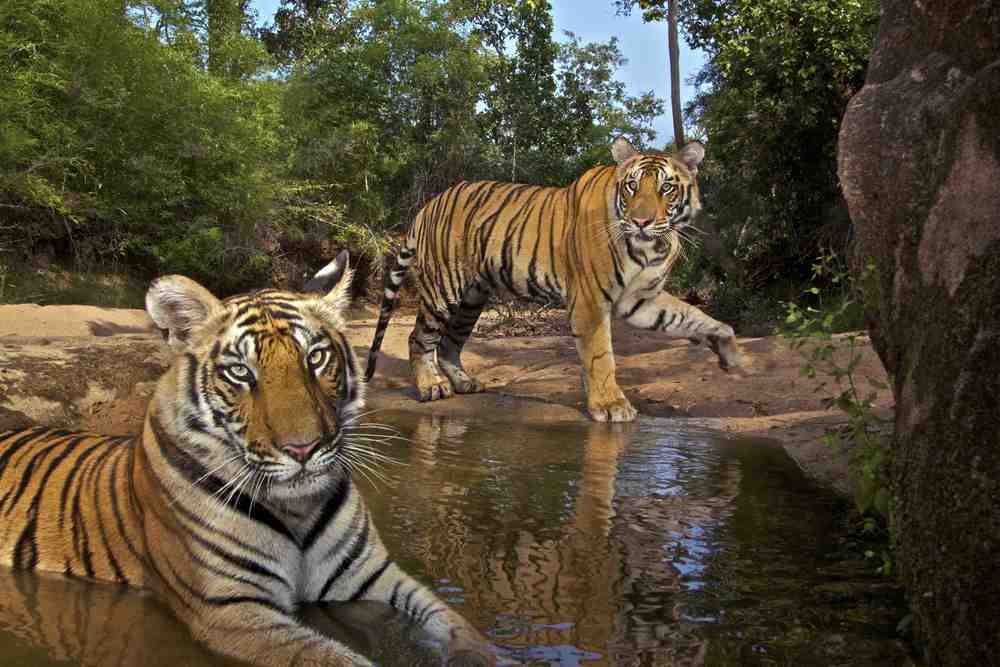
Fourteen-month-old sibling cubs cool off in the Patpara Nala watering hole in Bandhavgarh National Park, India. Both tigers have killed people. The female cub (foreground) killed two local villagers. The male (in back) and his brother killed and ate a park ranger and are now in captivity for the rest of their lives, placed in a facility for problem tigers in Bhopal.
A camera trap captures an Indochinese tiger at dusk in Thailand’s Hua Kha Khaeng Wildlife Sanctuary .
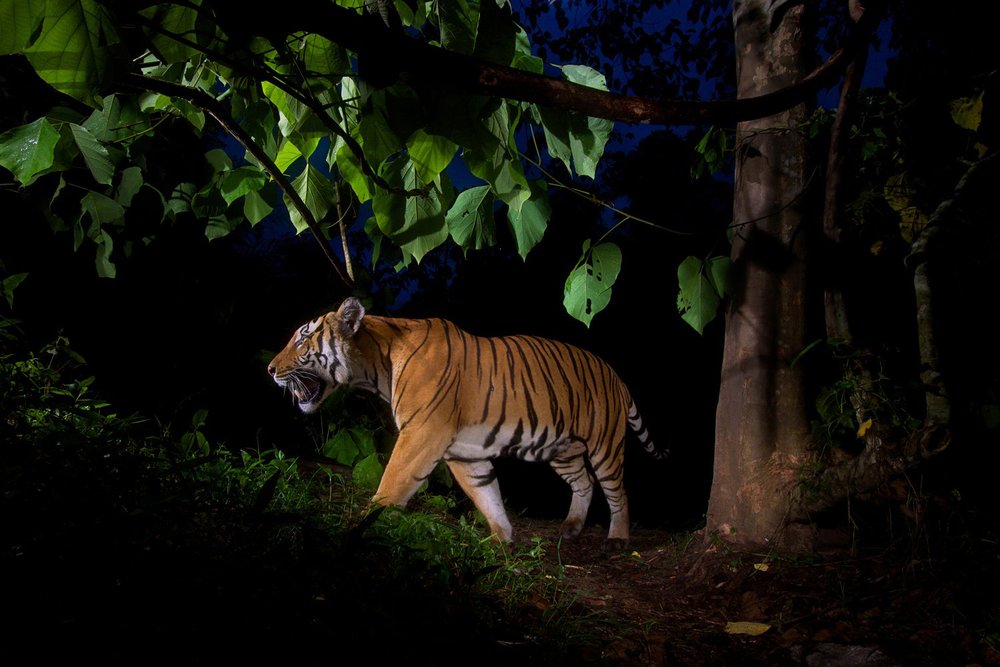
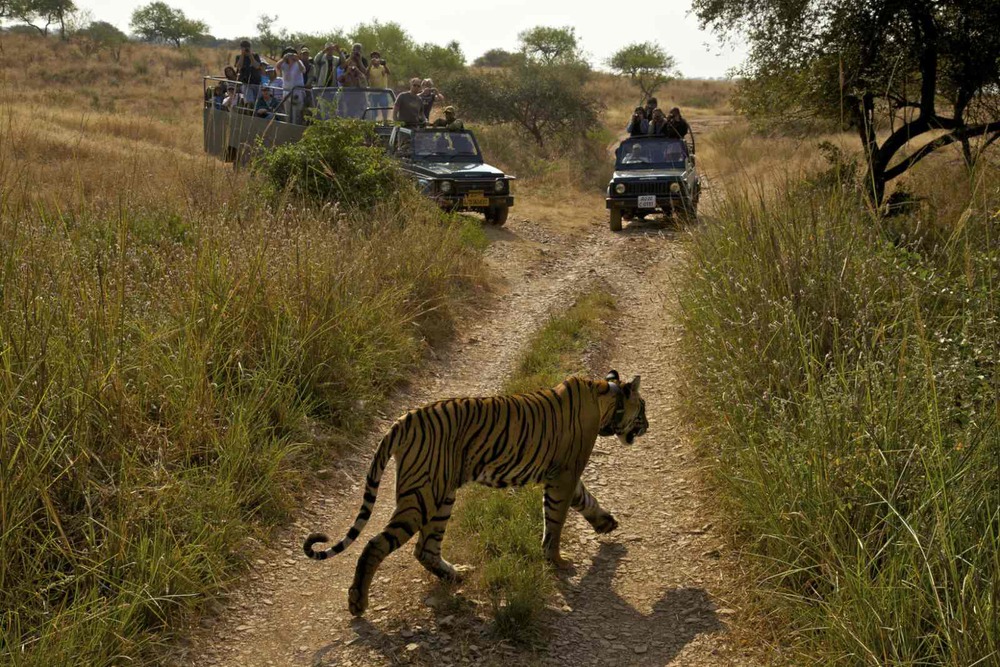
A Tigress moves through the tourist gypsies in Ranthanbhore National Park, India.Tourism money helps pay for the management of India’s national parks and staff. Once tigers are spotted, all the tourist jeeps converge so the visitors can see them and take pictures.
Two boys with tiger motifs painted on their bodies in celebration of Muharram, the Muslim new year in Umaria, India. In some parts of the Muslim work, people paint their bodies and wear mask to impersonate tiges and dance “Pulikali” or “the tiger dance”.
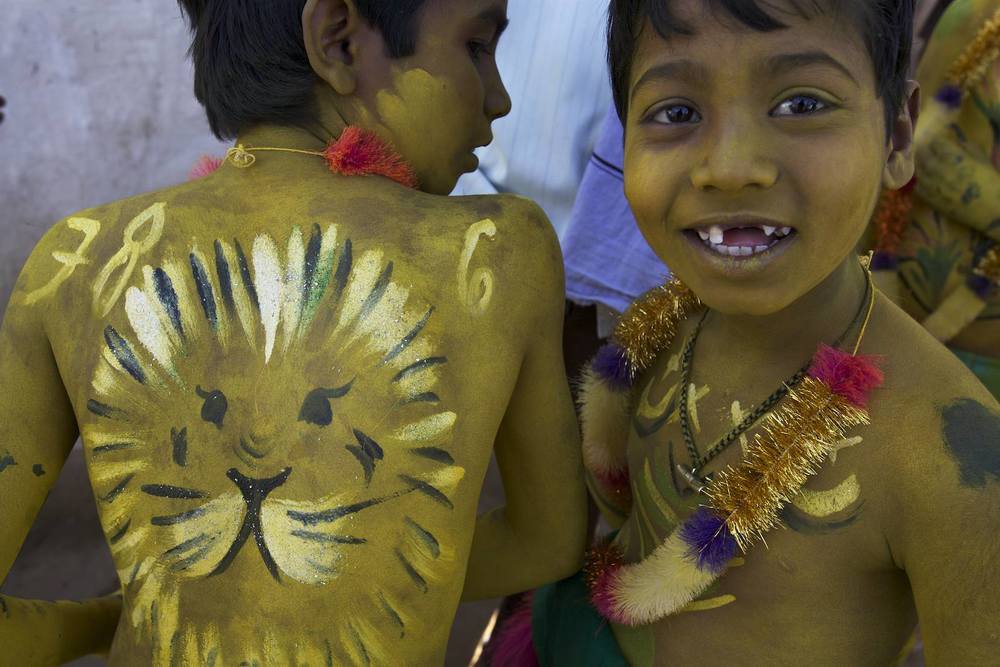
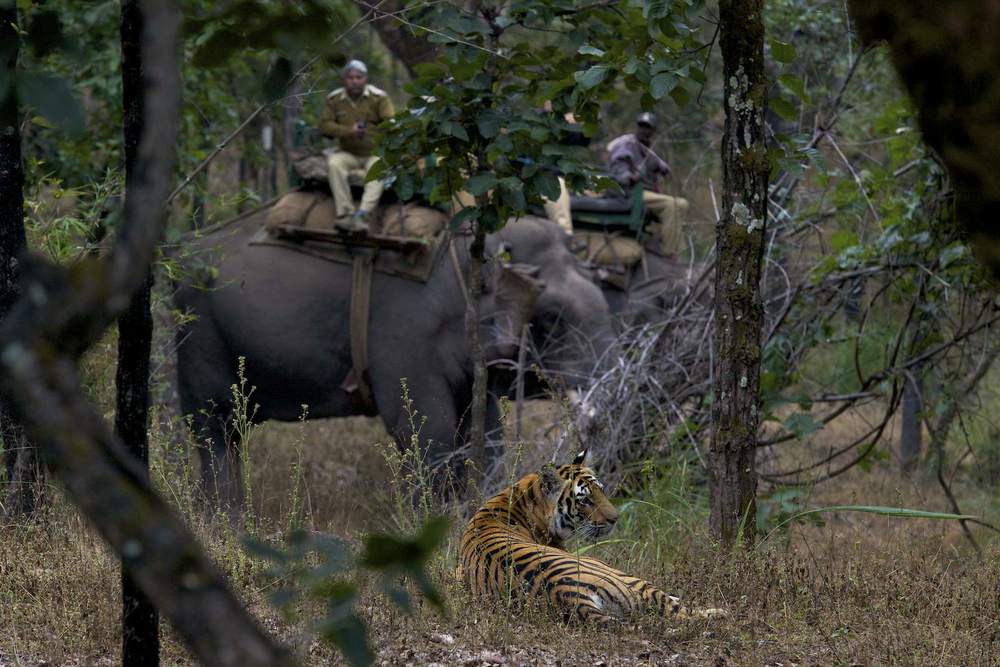
A park ranger monitoring a tiger cub (Panthera tigris Tigris) from atop of an elephant inside of Bandhavgarh Natl Park. Tigers within the park are heavily managed; park rangers track their whereabouts to try to keep both tigers and people safe.
Bahmera Male photographed inside Bandhavgarh.
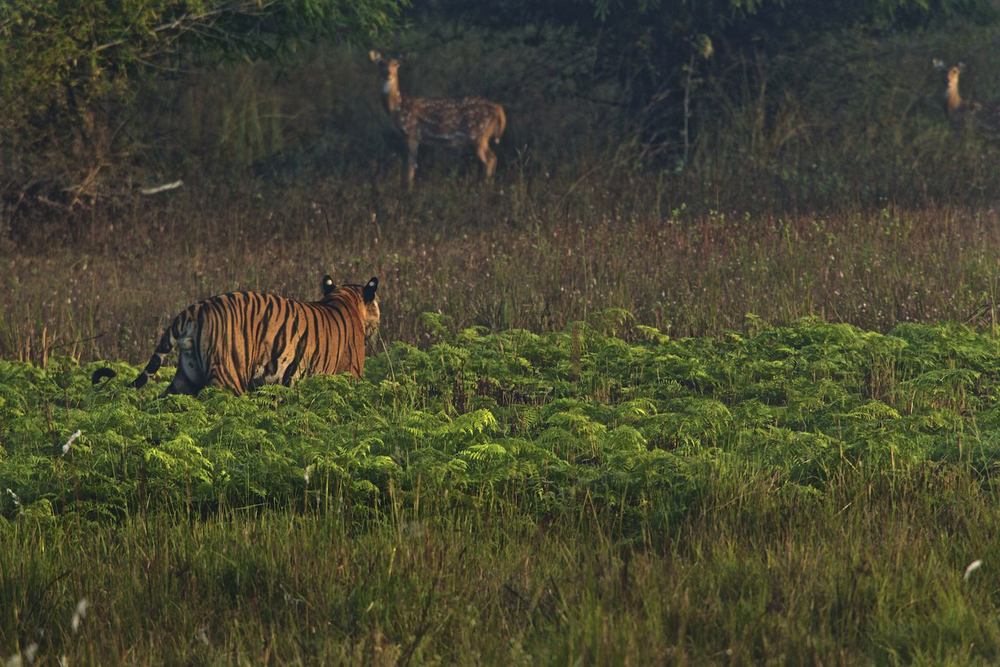
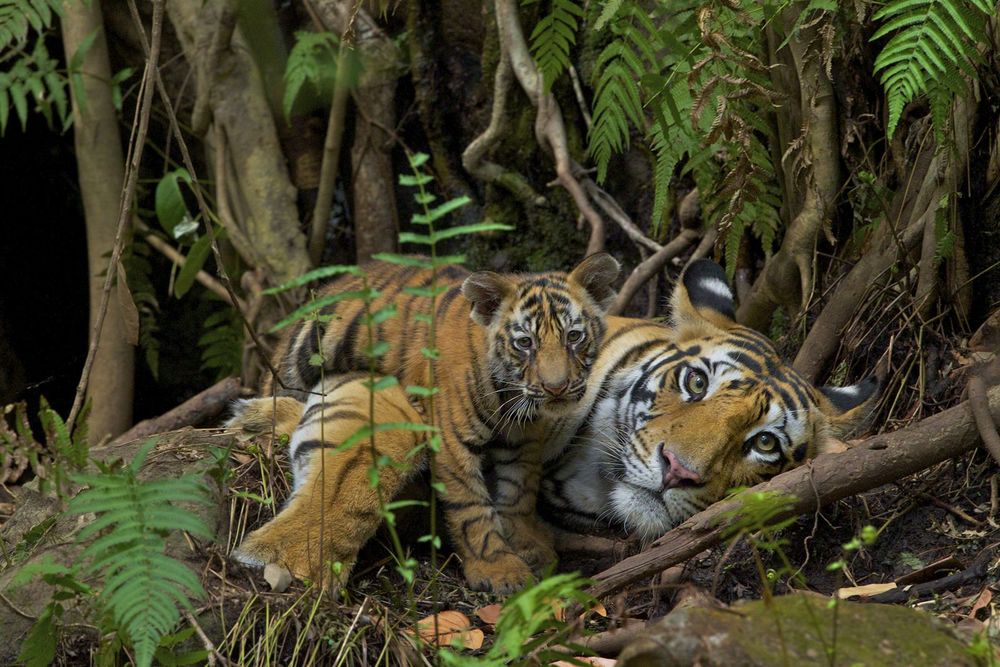
With proper protection and enough prey, tigers breed easily. This four-year-old female returned to the cave in Bandhavgarh National Park where she was born to have her first litter. This part of the park has abundant prey and protection, so this tigress feels secure. She gave birth to three cubs; tigers under stress rarely birth more than one cub.
The Sundarbans, the world’s largest wetland is a tiger stronghold and is also the area with the most human deaths attributed to tigers. Here, a tiger crossing from one island to the next hears the call of another male. He stopped and turned around.

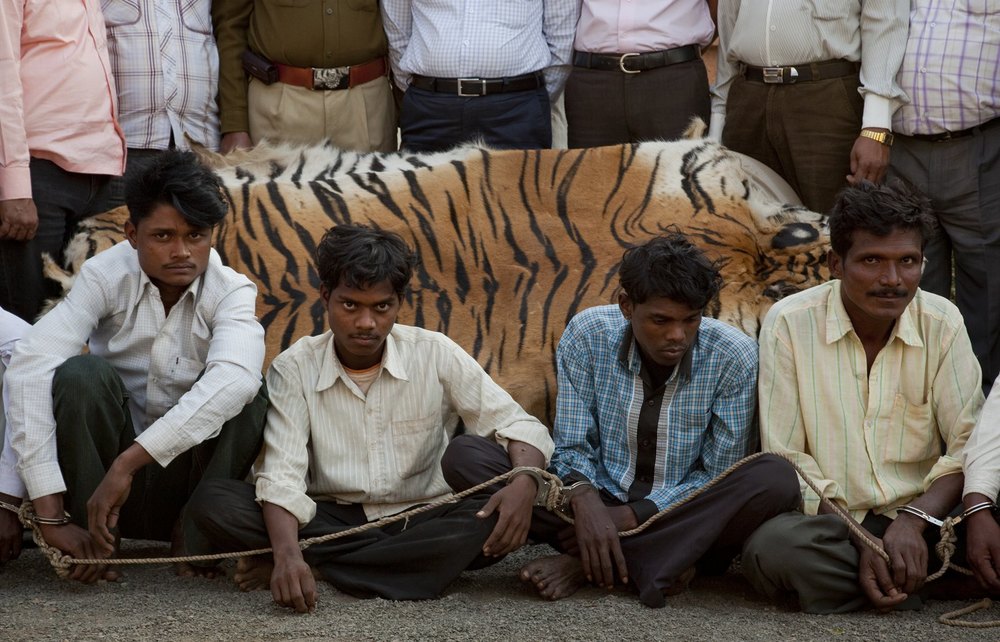
Poachers who were caught trying to sell a fresh tiger skin near Chandrapur. Dr. Manoj Kumar Sharma with his Police team. Mr. Ankush Pimpare (P.S), Mr. Pramod Badakh (P.S.I), Mr. Vaibhav Kalubarme (SDPO). Gadchandur Police Station holding the prisoners and police inspector Aslam Khan. Contextual quotes while on tour: “Most poaching is done locally by small-time poachers who happen to kill tigers, not organized gangs that specifically target tigers and as a result try to sell them locally before internationally.” and “When the big guys go down, there is always someone there to take their place”.
